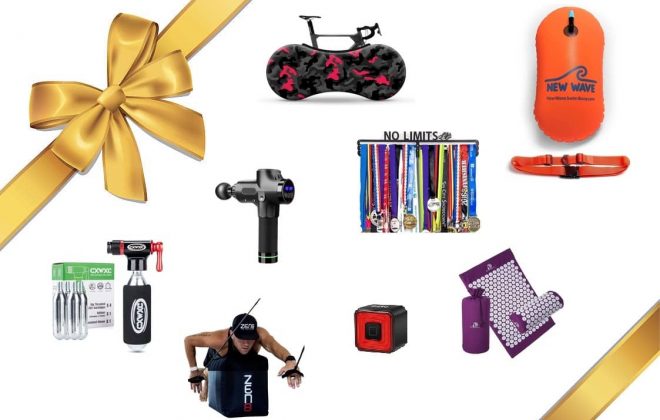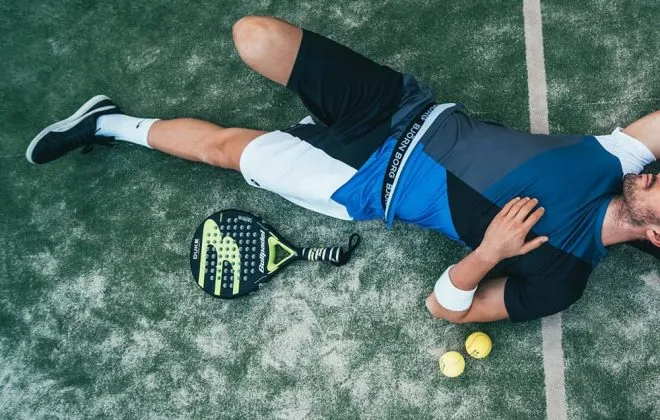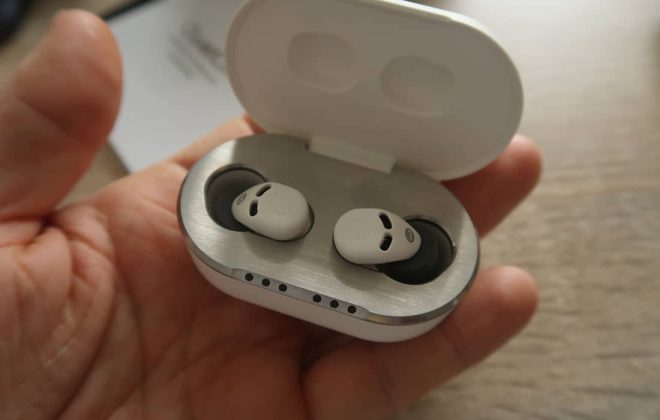5 Tips How To Prevent Chafing While Running Or During Other Exercise
For people who never had issues with it, chafing may sound like no big deal. However, it can get surprisingly painful, as exercising for extended periods of time can amplify even a ‘small’ discomfort. If ignored, it can turn into an excruciating experience that will affect comfort and performance, which is why it’s best to prevent chafing while running in the first place.
This issue can affect anyone – not only long distance runners. Have you ever bought a new pair of shoes that chafed so much on the first day you were not able to walk by the end of it? I bet that’s not the feeling you’d want to get at 30K of the marathon.
Indeed, it sounds like a minor issue when compared to physical demands of running a marathon or finishing an Ironman. However, small things add up and can really affect performance at the later stages of a race.
In endurance racing these small details like this can easily break the race or make it a complete torture.
Chafing while running & other exercise
Chafing is an irritation of the skin caused by its prolonged rubbing against something – be it clothing, a certain accessory (like a watch or a necklace) or the skin itself.
Anything that rubs against the skin has the risk of injuring it and causing soreness. The response can vary from a mild redness (rash) that is only sensitive to the touch to a very painful or even a bleeding wound that restricts certain movements and prevents the athlete from continuing.
It’s very frustrating not to finish a race, which is why it’s best to prevent chafing while running than to deal with it.
Typically, most problematic or sensitive areas tend to be:
- Heel, ball of foot & toes are the most common places where runners experience chafing or develop blisters. That’s usually caused by poor choice of running shoes or wet and sweaty feet.
- Arm pits is a very sensitive area due to excessive movement of the shoulder joint during exercise. Athletes who shave armpits might feel more discomfort.
- Inner thigh chafing tends to be a problem for people with larger legs and can even be uncomfortable during long walks.
- Crotch area is the most sensitive part of our body and even a slight chafing can cause discomfort.
- Neck – accessories worn during exercise and some of the clothing (i.e. cycling shirt or a wetsuit) can cause irritation to the skin around the area.
- Nipples – this tends to be more of a problem for men, because a sports bra reduces this risk for women.
Some factors that may cause or contribute to the problem include: sensitive skin, poor fitting clothing, excessive body weight (both fat or large muscles), hot weather.
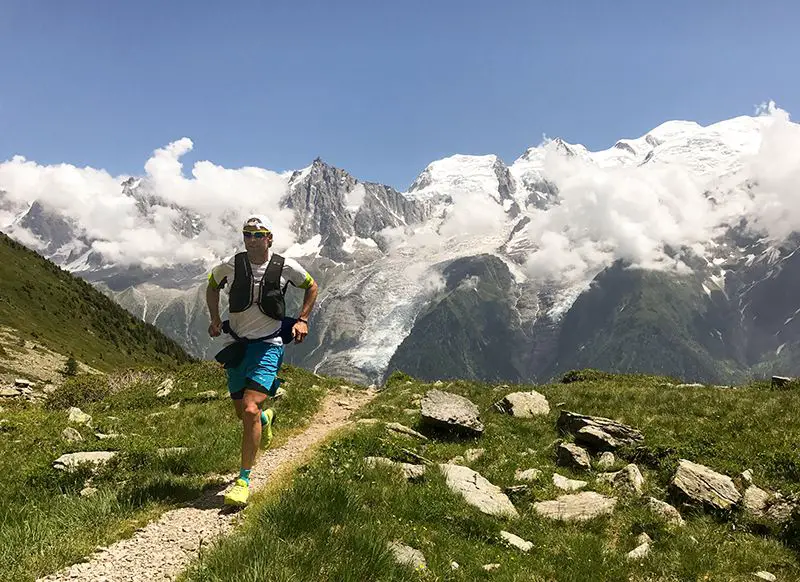
Chafing is not an exclusive problem. It can happen during any activity which includes repetitive motion over extended period of time. However, it is especially common during long-distance running and cycling due to the amount of body parts involved.
Knowing how and where it comes from really helps to understand how to prevent chafing while running or other exercise.
Tips to prevent chafing while running or during exercise
Generally, chafing is barely noticeable at the beginning and grows into a problem (blisters or bleeding) as the distance increases. Some athletes have less sensitive skin and can run 2 hours without any issues. Others are not that lucky and might feel irritation already 10 minutes into the exercise.
With the right choice of clothing and some prevention tips below, however, it’s possible to prevent chafing while running and other exercise altogether.
Tip #1 – Use appropriate clothing
The first and most important area to look at to prevent chafing during running or any other exercise is clothing. After all, it covers most of our body and has the biggest risk of rubbing the skin somewhere.
Clothing for exercise should be made of fabrics that absorb moisture, fit comfortably (not too snug or loose) and without expressed seams.
If your skin is prone to chafe, be strategic with clothing. Cover all sensitive areas (armpits or inner thighs) by wearing tight and seamless clothes. Those who have sensitive skin should also choose higher quality fabrics that are softer on the skin.
For example, if you suffer from inner thigh chafing, it’s not a good idea to run in shorts that leave inner thighs bare and cause a lot of friction. Protect those by using soft-fabric running tights instead.

The Resilient Athlete
A Self-Coaching Guide to Next Level Performance in Sports & Life
Are you aiming to become a resilient athlete who is able to withstand any pressure? Be able to jump on any opportunity? Take any challenge life throws at you head on?
Then this book is for you.
Learn moreSkip the underpants
Most of the athletic apparel is designed to be worn without the underpants to prevent chafing in the crotch area. In fact, athletic tights or shorts are usually quick-drying, well-ventilated and generally are of much better quality than a regular pair of underwear.
Putting on running or cycling kit on top of underpants will increase the temperature around the crotch and with that the probability of chafing or infections.
Choose the right running shoe size
We choose everyday shoes based on how snug they feel. The less movement there is – the better. That strategy doesn’t work with long distance running shoes. As we run for extended amount of time our feet start to swell, which causes excessive rubbing and typically results in blisters.
Well-fitted long distance running shoes should have some room for the foot to move and swell. A good practice is to choose the size which leaves around a thumb’s width between the toes and the end of the shoe – generally, that’s around half a size larger than your normal size. For example, my regular size is 44 and – depending on the brand – I’ll use 44.5 to 45 size for my marathon shoes.
Also, don’t race or run key long sessions in completely new shoes. Make sure you run some 20-30K in them first. That makes the material a little ‘softer’.
Invest in good socks
By far the best advice for beginner marathoners or ultra runners is to invest in good running socks.
High-quality running socks keep the feet dry by absorbing the sweat, are soft on the skin and have a little compression to support the ankle. All of that reduces the risk of developing blisters on the feet and sabotaging the race.
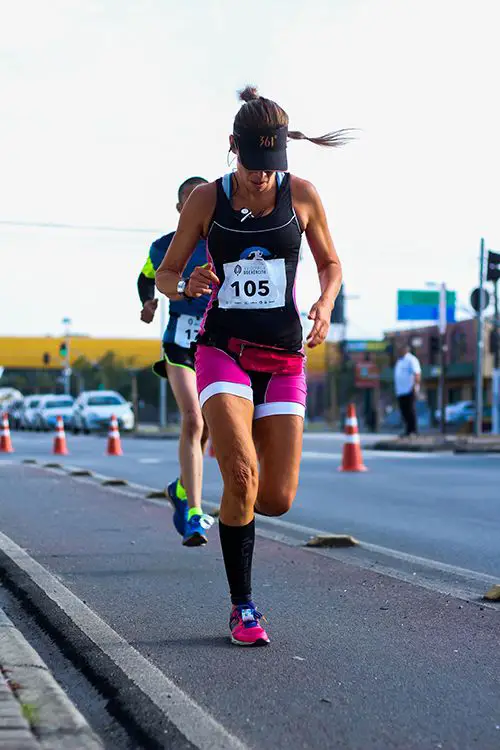
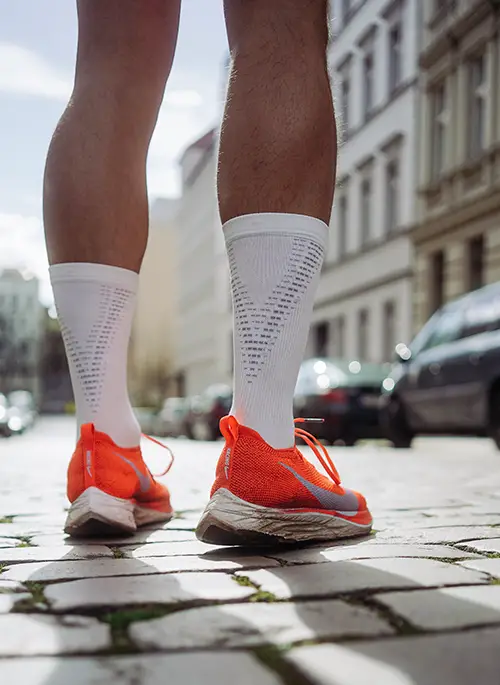
Tip #2 – Lubricate the sensitive area
In some cases (i.e. hot weather) it might not be possible to cover the sensitive area with clothing. Or covering it might not work as effectively (like around toes or neck). In these situations the best strategy is to lubricate the chafing area prior to the exercise.
After applying, lubrication essentially works as an additional layer on the skin. It doesn’t remove the chafing as such, but reduces friction and prevents irritation. Use it generously on all areas that are prone to chafe or develop blisters – toes, crotch, neck, armpits, etc.
Technically, any cream would provide the effect, but it’s best to choose the oil-based lubricants – these will last longer and are more resistant to sweat. Vaseline is the most popular choice and is available at any pharmacy. Personally, I found coconut oil to be more natural and better, though.
Oil-based lubrication usually lasts for 4-5 hours. So, if you’re racing an Ironman, it’s a good idea to put it in your transition bag and apply before the respective discipline.
Read also: How To Become A Better Athlete – 38 Practical & Useful Tips
Tip #3 – Tape the problem area
In some situations neither clothing nor lubrication can solve the problem. Take kayaking for example – holding a paddle for hours in wet conditions cause serious blisters and makes subsequent sessions very painful. Lubricating or wearing gloves is not an option, as it will impact the grip and sacrifice performance.
In such cases it’s best to tape the area that is prone to blisters with an adhesive bandage before the exercise. This way it will chafe against the bandage and not the skin, resulting in no irritation. Don’t combine it with lubrication, though, as the tape will not hold.
One hack I found to be very effective is to use a Kinesiology Tape instead of regular band-aids. It hold much better – even in wet conditions or in movable ares (like between fingers or toes). Just cut it to fit the needed shape or size and apply.
Tip #4 – Keep the moisture off
One thing that makes chafing during running worse is moisture – it exposes the skin, making it more prone to irritation. That can be sweat from the body, rain, humidity, water from a spilled drink and so on.
For a runner combination of a wet sweaty skin and rubbing is a recipe for blisters on feet.
If possible, try to keep feet dry as much as possible. Don’t run through piles of water and take care when pouring water all over you so that it doesn’t get to your feet. Towards the end of the race or a long session these small considerations will sum up and improve the overall comfort of the feet.
Tip #5 – Be careful with shaving
The process of shaving is very irritating for the skin. Running a blade over the exposed skin leaves it very sensitive for days. Doing so before the exercise can contribute to discomfort and make the area (i.e. armpits) even more prone to chafing.
To minimize the risk, try not to shave the problematic area within several days before a long training session or the race. Instead, use a trimmer to cut the hair to a minimum and leave it at that.
Did you find this information useful? Share the post with others using the buttons below.
Andrejs
Related Posts
Leave a Reply Cancel reply
GET A FREE TRAINING PLAN
Subscribe to my email list and get access to a free 4-week “back in shape” training plan
You’ll also get two full-body strength sessions and some other goodies!

How did I get here?
Hey there! My name is Andrejs and I am here to inspire, entertain and get you fit for any adventure.
I went from being an over trained pro athlete to an endurance coach sharing how to listen to your body and live life to the fullest.
Traveling, new sports & activities brought new meaning to my training and made it much more effective, fun and enjoyable. And I'm here to help you do the same.
